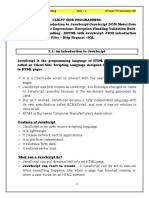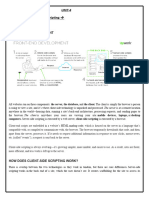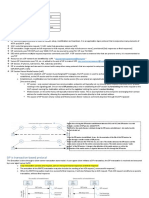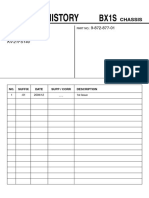0% found this document useful (0 votes)
9 views19 pages2.1 Client-Side Programming
The document provides an overview of Client-Side Scripting, primarily focusing on JavaScript as an object-oriented programming language used for web development. It discusses the advantages and disadvantages of JavaScript, the concept of scripts, and the differences between client-side and server-side scripting. Additionally, it includes examples of how to execute JavaScript in HTML and explains variable scope with examples of global and local variables.
Uploaded by
sec22it020Copyright
© © All Rights Reserved
We take content rights seriously. If you suspect this is your content, claim it here.
Available Formats
Download as PPTX, PDF, TXT or read online on Scribd
0% found this document useful (0 votes)
9 views19 pages2.1 Client-Side Programming
The document provides an overview of Client-Side Scripting, primarily focusing on JavaScript as an object-oriented programming language used for web development. It discusses the advantages and disadvantages of JavaScript, the concept of scripts, and the differences between client-side and server-side scripting. Additionally, it includes examples of how to execute JavaScript in HTML and explains variable scope with examples of global and local variables.
Uploaded by
sec22it020Copyright
© © All Rights Reserved
We take content rights seriously. If you suspect this is your content, claim it here.
Available Formats
Download as PPTX, PDF, TXT or read online on Scribd
/ 19
























































































